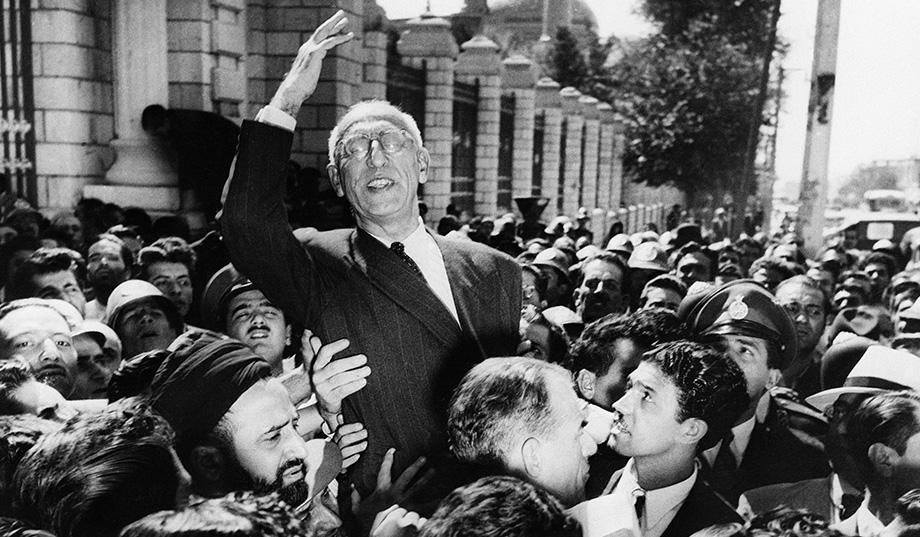Mosaddegh and the coup d'état of 1953

TEHRAN – Sixty-four years ago, a foreign-backed coup d’état - known in Iran as the 28 Mordad coup - was staged in Iran which saw the overthrow of the democratically elected government of Prime Minister Mohammad Mosaddegh on 19 August 1953 in favor of strengthening the monarchical rule of Mohammad Reza Pahlavi.
Known as Operation Ajax, the coup was carried out after an earlier coup attempt failed to overthrow Mosaddegh and install General Fazlollah Zahedi, the shah’s reliable ally, as prime minister. As a result, Mohammad Reza Pahlavi, the shah of Iran, had fled to Baghdad.
Days before the first coup attempt, Mosaddegh had dissolved the parliament to get rid of the shah’s close allies, giving himself and his cabinet more power to rule, while effectively stripping the shah of his powers.
With the success of the second coup, Zahedi was installed as prime minister, and the shah returned to Iran and continued to rule more firmly as monarch.
Mosaddegh was then arrested, tried and convicted of treason by the shah's military court. He was sentenced to death, but on the shah’s personal orders, his sentence was commuted to three years in solitary confinement in a military prison, followed by house arrest until his death.
Mosaddegh had also played a key role in the country’s 1951 movement that resulted in the nationalization of oil industry, which had been mainly controlled by the British-owned Anglo-Iranian Oil Company (AIOC), also known as BP.
Experts say the 1953 coup was aimed at securing the West’s oil interests in the country by restoring power to the Shah.
For years, the United States and Britain were blamed for the coup but both governments tried their best to sweep the story under the rug.
In 1989, the U.S. State Department first released coup-related documents, but edited out any reference to American or British involvement. Since then, the omission of CIA’s role has been widely criticized by historians.
Finally, in 2013, the CIA publicly admitted for the first time that it was behind the coup. It also released documents that showed how the British government tried to block the release of information about its own involvement in overthrow of Mosaddegh.
Again, the CIA failed to release all documents. According to Malcolm Byrne, who directs the U.S.-Iran Relations Project at the National Security Archive at George Washington University, the full installment of declassified material was scheduled to be released in 2013, but might have interfered with the Iran nuclear talks and were delayed again.
“This is going to be an important source for anyone interested in the tortured relationship between Washington and Tehran,” said Byrne. “But the fact that it has taken over six decades to declassify and release these records about such a pivotal historical event is mind-boggling.”
In June 2017, the CIA declassified more documents, shedding more light on the agency’s role in the coup, though numerous original CIA telegrams from that period are known to have disappeared or been destroyed long ago.
The approximately 1,000 pages of documents revealed that the CIA, believing the coup to have failed, attempted to call it off.
“Operation has been tried and failed and we should not participate in any operation against Mosaddegh which could be traced back to US,” CIA headquarters wrote to its station chief in Iran on August 18, 1953. “Operations against Mosaddegh should be discontinued.”
According to Byrne, the message was purportedly and famously ignored by Kermit Roosevelt, top CIA officer in Iran. “One guy was in the room with Kermit Roosevelt when he got this cable. [Roosevelt] said no – we’re not done here.”
MH/PA
Leave a Comment